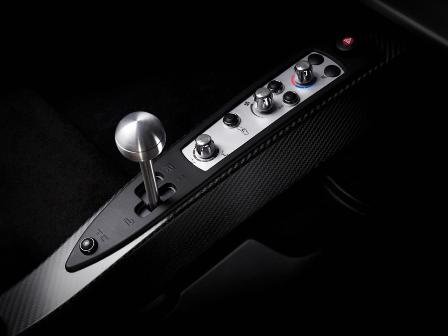Tesla Birth Watch 29: 93 Miles Per Charge
The San Jose Mercury News reports that tano kubwa have tested the Tesla. Yes, well, the buff books' jobbing journos only got a couple of hours behind the wheel. What's more (or less), Tesla gently revealed their Roadster is a "two mode" vehicle. Tesla now claims 220 miles per charge (down from 250) on "maximum range mode" and 165 miles in "standard mode." Motor Trend missed this wrinkle, and reported the higher number. Autoweek didn't mention the dual-mode deal, but reported they traveled just 93 miles on a single charge– with a limp-home aftertaste. And all the journos tested the Roadster with a "this is not my beautiful transmission" either locked into the higher of its two ratios, or, uncomfortably, not. Which doesn't square with Tesla mouthpiece Darryl Siry's claim to TTAC that the mags tested two different transmissions. In short, Tesla failed to provide journalists with a production-ready Roadster less than two months before its supposed production date.
More by Robert Farago


































Comments
Join the conversation
From the article: "We got 93 miles out of the full charge we had on our day’s drive, which was, as we said, spirited and over twisting mountain roads. The meter on the dash went from 95 percent charge to 7 percent by the time we got back to San Carlos." It went on to say that that 7% (sounds like a "virtual number") became 21% when the car switched over to power-conservation mode. That's still very low, on what really was a very short trip, mountains and twists notwithstanding. I can do 100 miles just going to school or running errands. There would be not enough juice left for an evening dinner for two after a typical weekend day in my car. Incidentally, anything below 25% to 30% SOC (State of Charge) is considered a "deep discharge," and significantly shortens the life of the battery pack, regardless of what the battery is made of. I learned this while I researched hybrids and batteries, just before I bought my Prius, and that's why the Prius' batteries last so long, the computer never lets the SOC go below 40% or so. Armed with that knowledge, I'm now able to extend the life of all of my batteries. I don't let my camera, laptop, or cell phone batteries go below a 40% SOC, except in rare case of bona-fide emergency. But back to the car. I don't think the range is long enough, especially if the driver is prudent and seeks to limit deep-discharge cycles.
Engineer: TTAC is an independent organization, but not one with ALL the in-depth scientific knowledge and equipment to thoroughly test all the battery and distance claims of the Tesla. For that, I'm sure you'd need a lab, a dyno, and multiple charge/discharge cycles to get a good average of benchmarks. Plus a little bit of the fun, real world testing.
SexCpotatoes :
I specifically stated that we want someone else to do the scientific tests. We know our limitations.
Of course, that's just a dream. Tesla has shown themselves singularly unwilling to face a rigorous independent examination of their vehicle's technology: from performance, to recharge time, to range, to safety, etc.
What does that tell you?
I'm sorry, but I don't see how anyone could shell out 100K for a "Sports Car" that can only be used as a sports car on rare occasions, unless you just happen to be cruising around your block. I want to know what's under the hood. I didn't see it being used for storage, and the engine is in the rear, so there should be at least a bit of extra space, right? Why couldn't a range-extending gasoline engine be placed in there? Something extremely small, only capable of charging to batteries while driving to help extend the drive time? Or, as others have suggested, what about a chain of supercapacitors? Whenever the engine isn't being held at-speed, the acceleration could come from these instead of the battery, which could be quickly recharged from braking. (Or, seeing as how 93 miles gets many people TO their location and not back, maybe an emergency fwd motor for getting home when you eventually do run out of juice could be installed... of course, taking cues from the ill-fated and unsuccessful Prius wouldn't be too wise, would it?) --Then again, what do I know? I fix computers for a living... Maybe Tesla has it right.